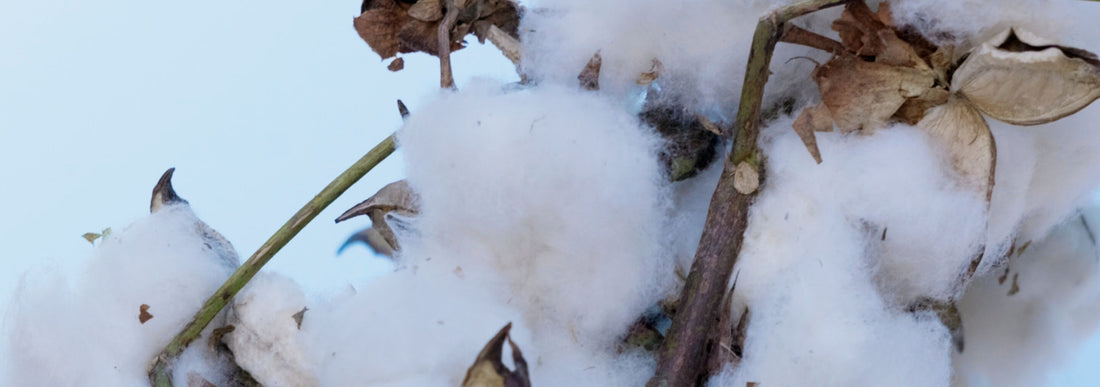
What is Cotton?
Share
Cotton: From Plant to Fabric, History, Uses, and Impact
Cotton is one of the most versatile and widely used natural fibres in the world, and its influence on both the textile industry and our daily lives is profound. From the clothes we wear to the fabrics we use in our homes, cotton is everywhere. But how much do we really know about it? In this article, we’ll dive deep into everything about cotton—from its history, production, and properties to its environmental impact, the pros and cons of using it, and much more.
If you’re looking to gain a thorough understanding of this fibre, this article will guide you through its entire journey—from seed to fabric. Additionally, we’ll explore how to care for cotton clothing, interesting facts about cotton, and why it has become such an essential material worldwide.
What is Cotton?
Cotton is a soft, fluffy fibre that grows in a protective case, called a boll, around the seeds of cotton plants (genus Gossypium). The fibre is composed primarily of cellulose, an organic compound that gives it its soft texture and durability. Cotton is harvested, processed, and woven into fabrics, which are used for a wide variety of purposes, including clothing, bed sheets, and home decor.
Cotton is a 'Seed Fibre'
Seed fibres develop in the seedpod of the plant. In order to use the fibre, it must be separated from the seed. (The seed is used to produce oil and animal feed.) By far the most important seed fibre is cotton.
Other Seed fibres:
- Coir: Is obtained from the fibrous mass between the outer shell and husk of the coconut.
- Kapok: Is obtained from the seed of the Java Kapok (Silk Cotton) tree (Eriodendron anfractuosum) or the Indian Kapok tree (Bombax malabraica).
- Milkweed: (Asclepias incarnate and A. syrica) produces a soft, lustrous, hollow-floss seed hair fibre resembling Kapok.
The History of Cotton
The history of cotton spans over 7,000 years, and its cultivation has played a significant role in shaping economies, cultures, and industries around the world.
- Origins in Ancient Civilisations: Cotton was first cultivated in regions like India, Egypt, and Peru. The earliest known cotton textiles date back to around 5000 BCE in the Indus Valley Civilisation.
- Cotton in Europe: Cotton did not reach Europe until the Middle Ages, and even then, it was considered a luxury material. It wasn’t until the rise of global trade routes during the 16th and 17th centuries that cotton became more widely available.
- The Cotton Industry and Industrial Revolution: Cotton production surged during the Industrial Revolution in the 18th century, with innovations like the spinning jenny, cotton gin, and power loom. This led to a massive increase in cotton’s accessibility, transforming the textile industry forever.
- Global Impact: By the 19th century, cotton became the backbone of economies in the southern United States, India, and other colonies. Unfortunately, the cotton industry’s expansion was closely tied to the rise of the slave trade, especially in the American South.
The Cotton Plant and Fibre
Cotton plants grow in warm climates, typically in countries such as the USA, India, China, and Pakistan. The plant grows fluffy bolls around its seeds, which are the source of the cotton fibre. Here’s a breakdown of the cotton plant’s components:
- Cotton Boll: This is the protective case around the seeds, and it is where the fibres grow.
- Lint: The raw fibre that is harvested from the plant.
- Seed: Cotton seeds are either planted to grow new cotton plants or processed into cottonseed oil, another valuable byproduct.
How is Cotton Produced? (From Plant to Fabric)
The process of turning cotton from a plant into fabric is complex and involves several stages:
- Cultivation: Cotton is planted and grows over several months in warm, sunny climates.
- Harvesting: When the cotton bolls ripen, they are harvested either by hand or by machine. Modern cotton farms use mechanical cotton pickers to streamline the process.
- Ginning: After harvesting, cotton undergoes ginning, where the fibres are separated from the seeds. The cotton gin (invented by Eli Whitney in 1793) revolutionised this process, allowing for faster and more efficient production.
- Spinning: The separated cotton fibres are then spun into yarn. This process involves combing and drawing out the fibres to create a long, continuous thread.
- Weaving/Knitting: The spun yarn is then woven or knitted into fabrics. Weaving involves interlacing two sets of yarns, while knitting uses one continuous thread to create loops.
- Finishing: The fabric undergoes several finishing processes, such as bleaching, dyeing, or printing, to prepare it for use.

Properties of Cotton
Cotton has unique properties that make it one of the most popular textiles:
- Breathability: Cotton allows air to circulate, making it ideal for warm-weather clothing.
- Softness: The soft fibres make it comfortable for everyday wear.
- Absorbency: Cotton can absorb moisture, making it great for towels and bed linens.
- Durability: While soft, cotton is also strong and can withstand repeated washing.
- Hypoallergenic: Cotton is a good choice for those with sensitive skin, as it doesn’t irritate the skin easily.
- Versatility: Cotton can be woven into various types of fabrics, from lightweight muslins to heavy denims.
Common Uses of Cotton
Cotton is widely used across various industries. Here are some of the most common applications:
- Clothing: Cotton is a staple in casual and everyday wear, such as T-shirts, jeans, and dresses.
- Home Textiles: Cotton is often used in home goods, including bed sheets, towels, curtains, and upholstery.
- Medical Supplies: Cotton is used to produce bandages, gauze, and other medical supplies due to its absorbent and hypoallergenic properties.
- Industrial Uses: Cotton is also used in the production of products like tarpaulins, tents, and filters.
How to Care for Cotton Clothes
Caring for cotton garments is essential to prolong their lifespan. Here are some best practices:
- Washing: Cotton fabrics are generally machine washable, but always follow the care label instructions. Cold or warm water works best for maintaining colour and fabric strength.
- Drying: Air-drying cotton clothing helps prevent shrinkage. If using a dryer, choose a low-heat setting.
- Ironing: Cotton can wrinkle easily, so ironing is often necessary. Use a medium or high heat setting with steam for the best results.
- Stain Removal: Since cotton is absorbent, it can easily soak up stains. Pre-treat stains with a stain remover or mild detergent before washing.
Environmental Impact of Cotton
Cotton is both a blessing and a curse for the environment. While it’s a natural fibre, its production has significant environmental consequences.
Positive Impact of Cotton on the Environment:
- Biodegradability: Cotton is a natural fibre that biodegrades over time, unlike synthetic fibres.
- Renewability: Cotton is a renewable resource, as it grows year after year.
Negative Impact of Cotton on the Environment:
- Water Consumption: Cotton is notorious for its high water usage. It takes around 10,000 litres of water to produce 1 kilogram of cotton (roughly the amount needed for one pair of jeans).
- Pesticide Use: Cotton farming requires large amounts of pesticides, which can lead to soil and water pollution.
- Soil Degradation: Continuous cotton farming can deplete soil nutrients, leading to long-term damage to farmland.
Organic Cotton
To combat the negative environmental impact of traditional cotton farming, organic cotton is produced without the use of harmful pesticides and synthetic fertilisers. While organic cotton requires less water and chemicals, it is more expensive to produce, which leads to higher costs for consumers.
The Negatives and Positives of Cotton on the World
Positives:
- Economic Importance: Cotton is a critical crop for many economies, especially in developing countries.
- Employment: Millions of people around the world work in cotton farming, ginning, and textile production.
- Comfort and Versatility: Cotton’s breathability, softness, and absorbency make it a go-to material for clothing and home textiles.
Negatives:
- Labor Conditions: In many regions, cotton workers face poor working conditions and low wages, with child labour still being an issue in some countries.
- Environmental Impact: Cotton’s need for large quantities of water and pesticides makes it one of the more environmentally damaging crops.
- High Energy Usage: The processing and transportation of cotton require significant energy, further contributing to its environmental footprint.
Interesting Facts About Cotton
Cotton is Everywhere: It is estimated that the average person uses around 29 pounds of cotton each year.
First Plant to Be Genetically Modified: Cotton was the first plant to be genetically modified in the 1990s to produce higher yields and become more pest-resistant.
Cotton and Space: Cotton seeds were among the first plants to be grown in space aboard the International Space Station as part of a NASA experiment.
The Future of Cotton: Innovations and Sustainability
With the growing awareness of sustainability, the cotton industry is evolving. Organic cotton and other eco-friendly alternatives are becoming more popular. Innovations in water-efficient farming techniques and sustainable fashion practices are helping to reduce the environmental impact of cotton production.
Cotton is a fibre that has shaped industries, economies, and daily life for centuries. From its ancient origins to its role in modern fashion, the journey of cotton is fascinating. However, it is important to acknowledge both its positive contributions and the environmental challenges it poses. By making informed choices—such as supporting organic cotton and sustainable farming practices—we can continue to enjoy cotton’s many benefits while minimising its negative impact on the planet.



